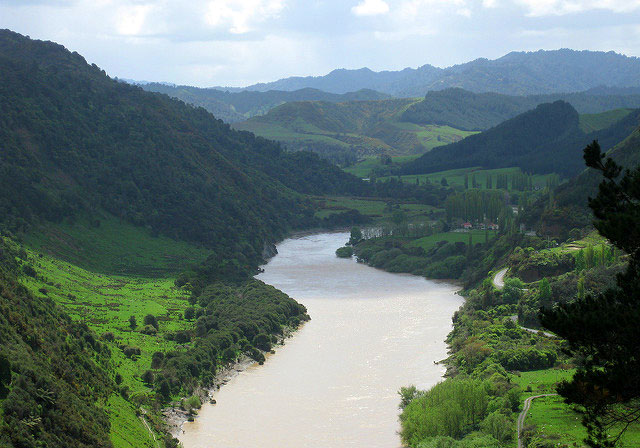“Winding its way through dense forest laced with hidden waterfalls, the Whanganui River is the largest navigable river in Aotearoa, the Māori word for New Zealand. With the passage of the Te Awa Tupua (Whanganui River Claims Settlement) Bill in March, the river became the first water system in the world to be recognized as a rights-bearing entity, holding legal “personhood” status. One implication of the agreement is that the Whanganui River is no longer property of New Zealand’s Crown government — the river now owns itself.
“Five days after the Te Awa Tupua Bill, the High Court of Uttarakhand at Naintal, in northern India, issued a ruling declaring that both the Ganga and Yumana rivers are also “legal persons/living persons.” But what does it mean for a river, or an ecosystem to hold rights? The answer may vary from place to place.
“The growing global movement for Rights of Nature — or the Rights of Mother Earth as some cultures prefer — seeks to define legal rights for ecosystems to exist, flourish, and regenerate their natural capacities. These laws challenge the status of nature as mere property to be owned and dominated by humans, and provide a legal framework for an ethical and spiritual relationship to the Earth. While recognizing legal rights of nature doesn’t stop development wholesale, it can stop the kind of development that interferes with the existence and vitality of ecosystems. In the last decade, four countries and dozens of US communities have passed laws recognizing “legal standing” for ecosystems.
“In many cases, legal recognition for the rights of ecosystems reinforces long-held cultural and spiritual beliefs. For the Māori of Aotearoa, like many Indigenous cultures worldwide, there is no separation between humans and everything else.”
Read the whole article here.

Photo: Felix Engelhardt

 Follow
Follow